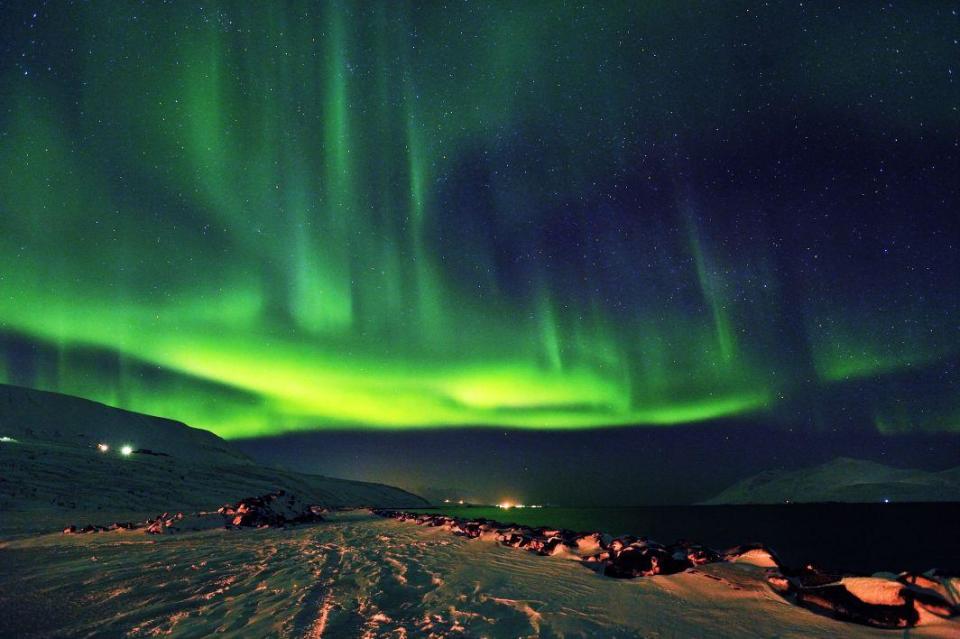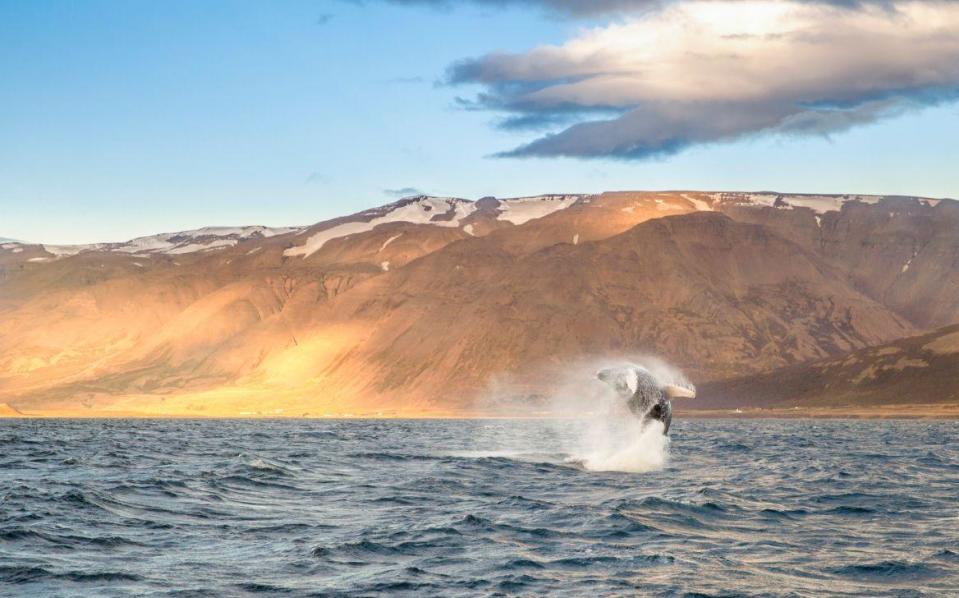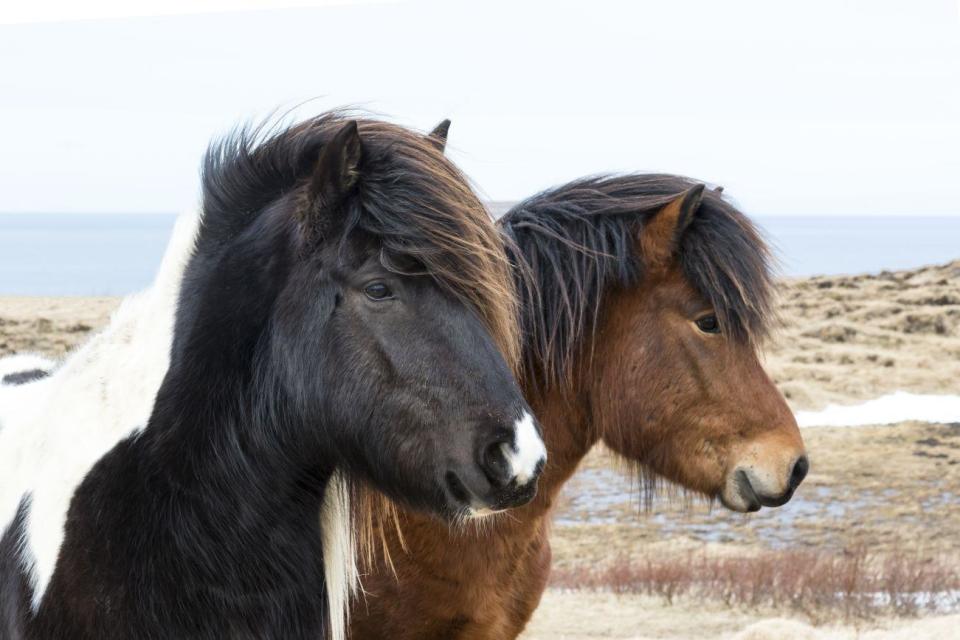Akureyri: why Iceland's second city is well worth a visit

By now it feels like everybody and their mum has gone to Iceland. Since budget airlines started flying to Reykjavik, Instagram feeds have been filled with pictures of geysers, waterfalls and mudpack selfies from the Blue Lagoon. But it also feels like everyone follows the same path. Fly into the capital, a brief skip around the Golden Circle, see the Northern Lights and then home.
Maybe you’ve done it before. Maybe you want to avoid the endless stream of coaches clogging up car parks. Or maybe you just want to do something a little bit different.
Enter Akureyri.
Iceland’s second-largest city is now far more accessible, following the launch of the first direct flights from the UK with tour operator Super Break. These charter flights are departing from various regional airports, including one golden-ticket flight from Stansted on February 19 — the only departure from London all year. Outside of that time, you’ll have to fly via Reykjavik — Air Iceland Connect flies daily from the capital.
Akureyri captures all that’s great about Reykjavik — gorgeous wooden houses, cosy little bars and a striking mountainous backdrop — but skips the crowds. The city sits at the end of Eyjafjörður fjord, a gorgeous stretch of blue water lined with meadows grazed by raggedy Icelandic horses.
With a population of only 18,000, it’s a cinch to navigate and is as charming as you could hope for. Take the traffic lights, for example. In Akureyri, all stop lights are in the shape of hearts, in an initiative put into action after the economic crash of 2008, to remind the city’s residents what’s important.
Akureyri also serves as a jumping-off point for North Iceland, a region packed with otherworldly sights — think lunar volcanic landscapes, bubbling mud pits and vast, violent waterfalls that aren’t besieged by a million selfie sticks.
In November I landed in Akureyri in the middle of a ferocious snowstorm, with the kind of wind that will physically lift you up and plonk you down a few feet away. Visibility was almost non-existent, and the snow was piling up at an alarming rate. Roads were closed. Schools were closed. Everything, in fact, seemed to be closed.
Everything except the Akureyri Swimming Pool. Heated geothermally, this outdoor pool is open all year round, meaning you can take a dip while the snow falls on your shoulders. I had to move quickly as the icy wind whipped around my shockingly pink thighs, plunging into the first “hot pot” (hot tub) I could find. There’s nothing quite like the full body tingle that comes from sinking into piping-hot water after standing practically naked in -2 degrees. Or rather, there isn’t until you decide to give the icy plunge pool a try. Conveniently located next to the hottest “pot” of all, the water felt oddly tolerable for the first second or two, before I dunked fully in and involuntarily screamed an expletive at such volume that even the nearby teenage boys looked shocked.
These geothermal pools are all over Iceland, be they traditional swimming pools or natural baths. The Mývatn Nature Baths are a calmer, smaller sibling of the Blue Lagoon, with steam clouds rising over jagged rocks.
The area around Lake Mývatn captures that stark, desolate terrain that’s one part Nordic ghostliness and one part Star Trek location. Its ethereal, eerie vibe means that it was the perfect location for Game of Thrones, which has been filmed in North Iceland since season two.

Fans will be able to spot numerous locations from the show, from the craggy lava fields of Dimmuborgir (where Mance Rayder set up his army of Wildlings) to Grjótagjá, the cave in which Jon Snow had a jolly good time with Ygritte.
The snow at the cave’s entrance came up to my waist but I managed to slide clumsily into the opening, convinced that at any moment I would slip and plunge into the steamy water below. Between blusters of snowfall and precarious icicles, the walls of the cave shone in the light of my torch, rumpled like a ball of tinfoil with still waters beneath. Truth is, a dip didn’t seem like such a terrible idea. The cold outside, unimaginable and vicious, had impregnated my bones to the point where it was impossible to do anything but shiver.
Yet just a few feet under this frozen ground lies a bubbling cauldron of heat. Just around the corner from Grjótagjá, the steam springs and mud pots of Hveraröndor Hverir burst with life, filling the air with an unimaginable stench.

The power of the earth is utilised in a more appetising way, too. Hverabrauð (“geyser bread”) is a rye loaf baked in wooden casks under the ground and has the taste of treacly, chewy soda bread.
I got to sample it in Vogafjós, a bonkers café-slash-cow shed combining great food with an inexplicable bovine presence. While avoiding eye contact with the cows, I distracted myself with geyser bread topped with cottage cheese, blueberry jam and slivers of raw smoked lamb. Another odd combination, but one that was far more appetising. It was a fitting dish (and café) to sum up the region. A little bit barmy, a little eccentric, a little unexpected… but somehow you’re left wanting more.
Details
Super Break (superbreak.com) has a four-night Experience Iceland’s Arctic North trip leaving Stansted on February 19, from £779pp including direct flights, accommodation and tours. Icelandair (icelandair.co.uk) and Air Iceland Connect fly via Reykjavik from £350.
inspiredbyiceland.com, northiceland.is

 Yahoo News
Yahoo News 